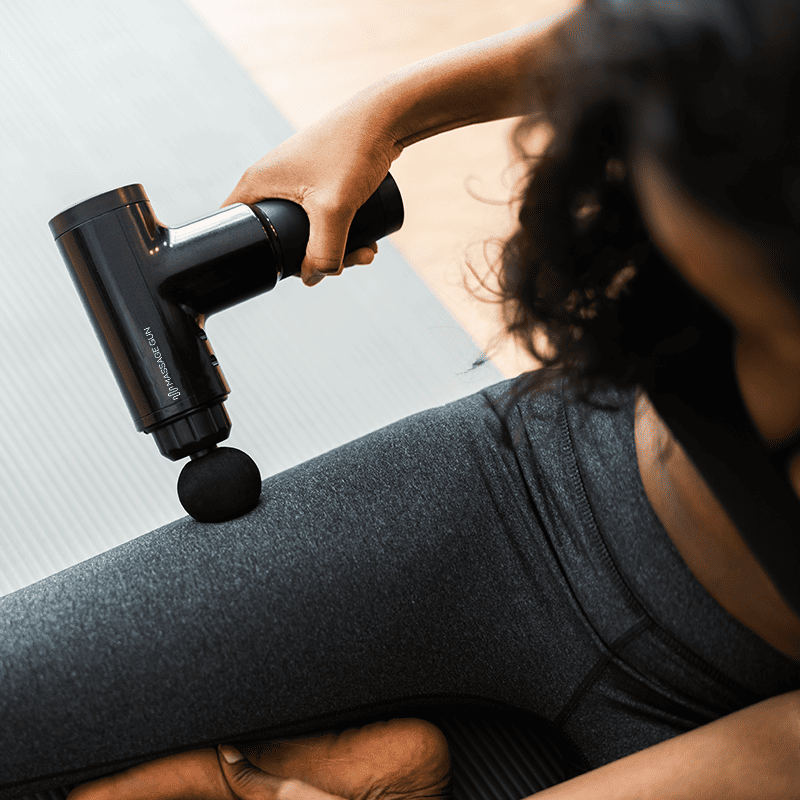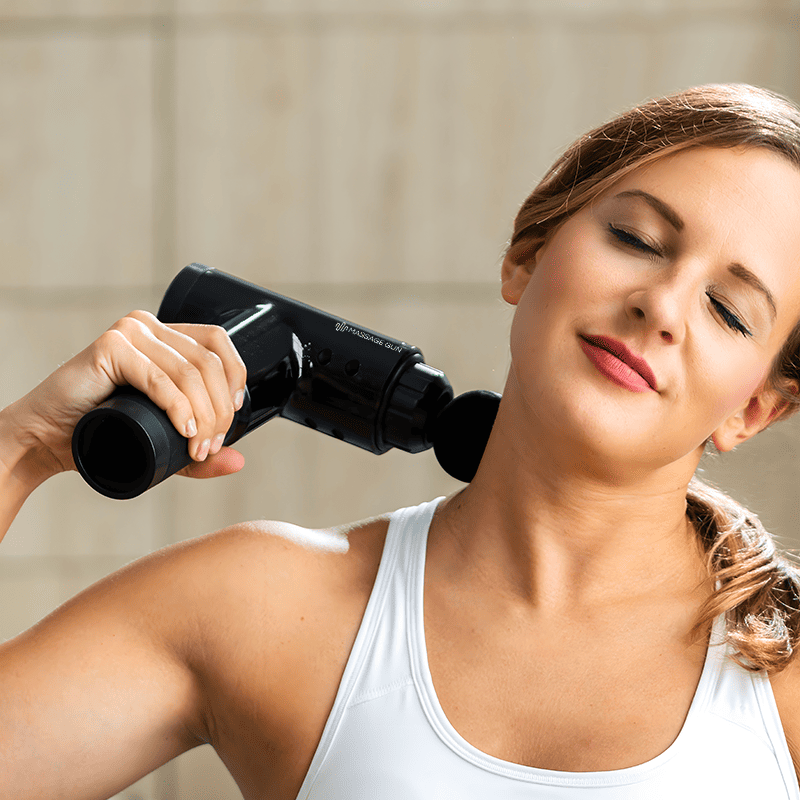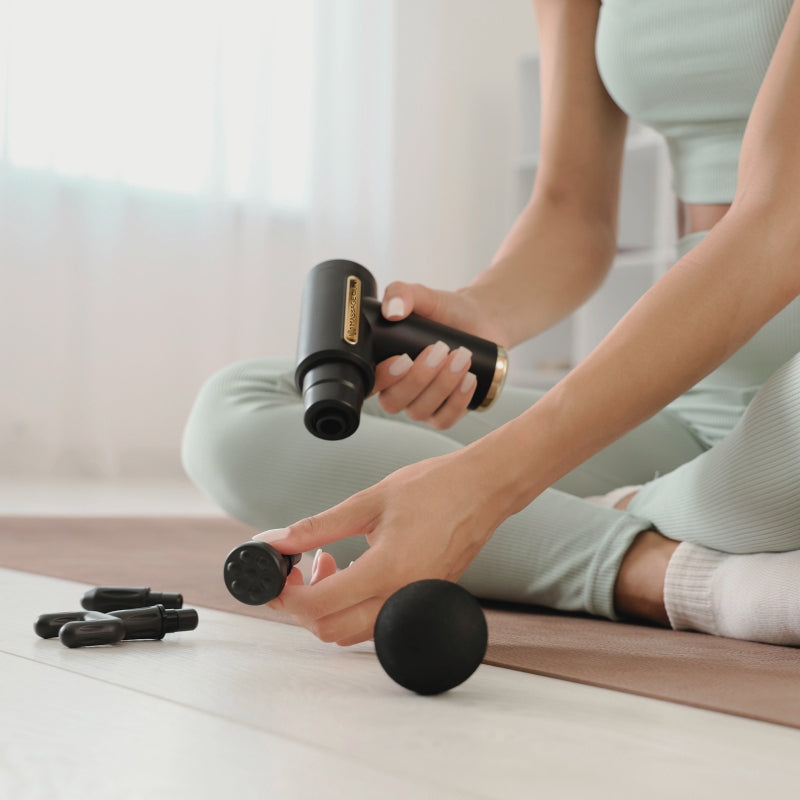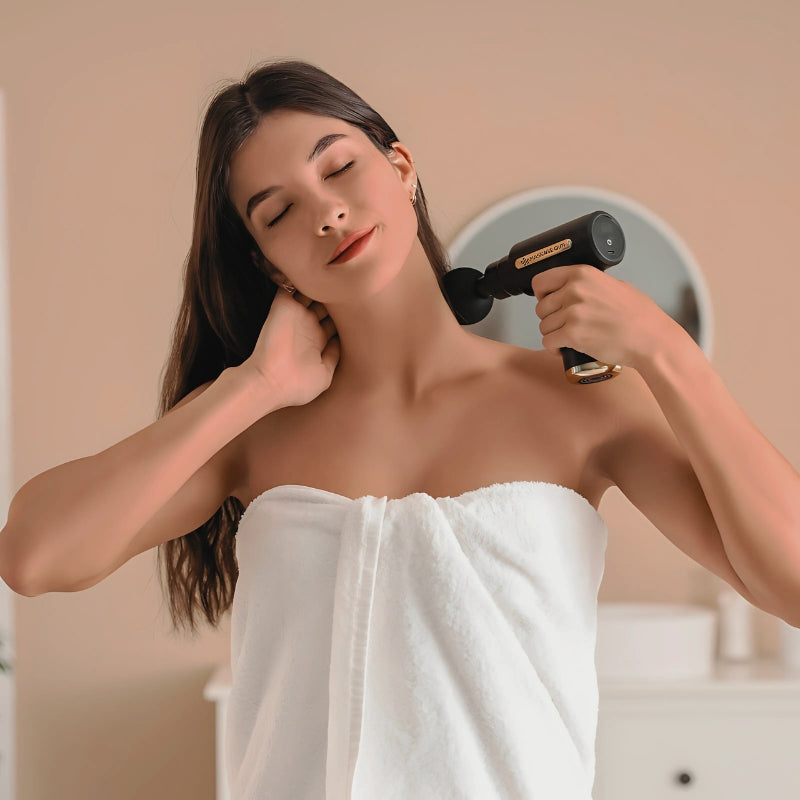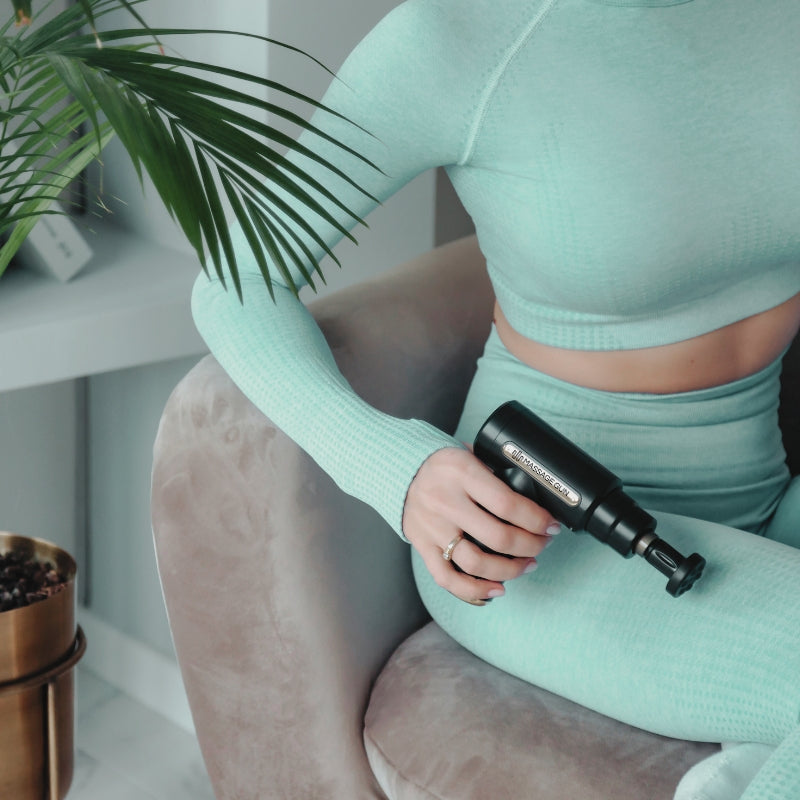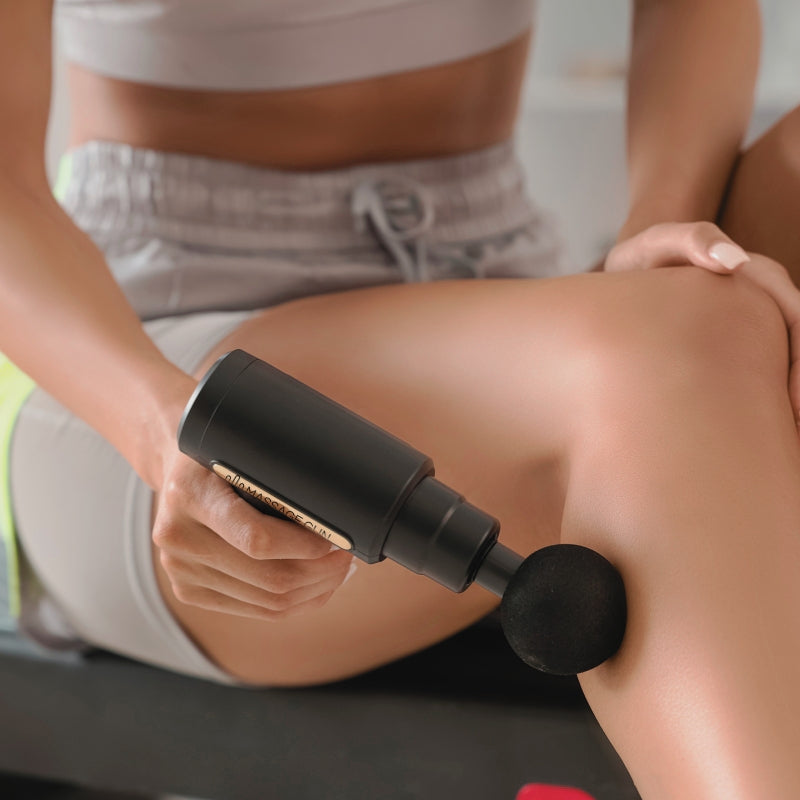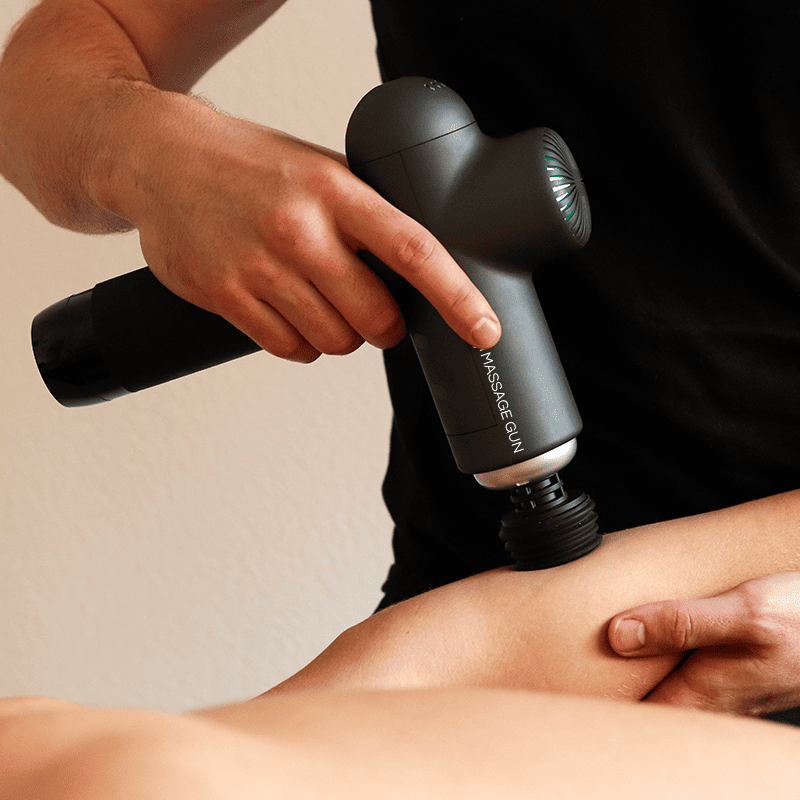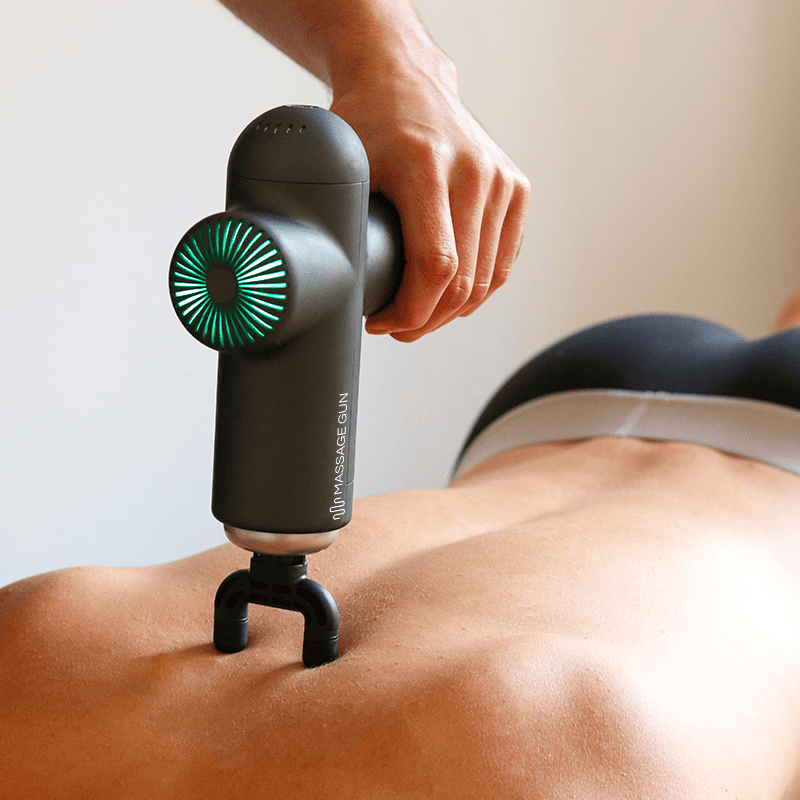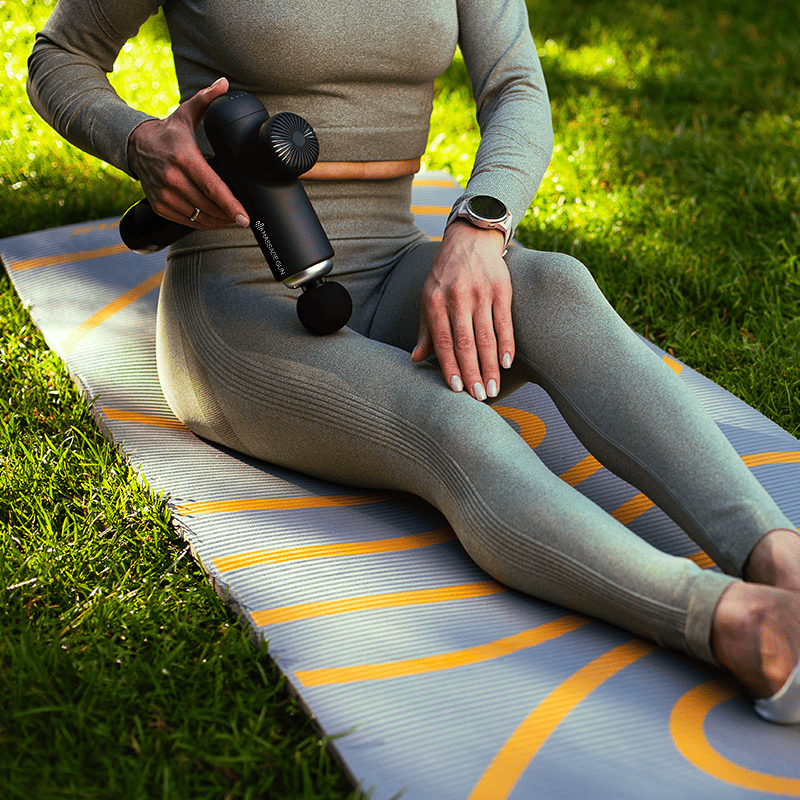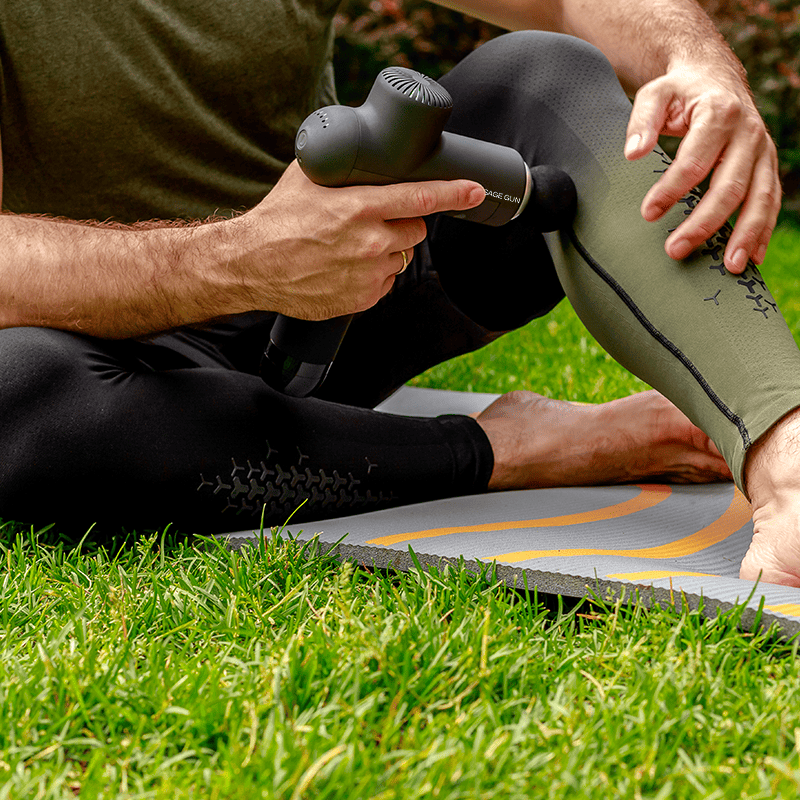Massage guns, like the popular Theragun, have become essential tools for muscle recovery and pain relief.
If you’re wondering whether you can use your Flexible Spending Account (FSA) or Health Savings Account (HSA) to buy a massage gun, the answer depends on the intended purpose and whether it qualifies as a medical device.
This guide will walk you through the eligibility rules, requirements, and how to make the most of your pre-tax healthcare spending to purchase an FSA- or HSA-eligible massage gun.
What makes a massage gun FSA or HSA eligible?

To be eligible for reimbursement with an FSA or HSA, a massage gun must be used for a medical condition or treatment, such as pain relief, physical therapy, or recovery from an injury.
The device must be recommended by a healthcare provider and considered medically necessary. For instance, a massage gun used to treat chronic muscle soreness, increase blood flow, or reduce tension may qualify if these conditions are part of a prescribed treatment plan.
If you’re buying a massage gun for general health, wellness, or relaxation, it is not eligible for FSA or HSA spending. However, if your doctor issues a Letter of Medical Necessity (LMN), the purchase may be approved as a qualified expense under your plan.
Can you buy a Theragun or Hypervolt with an FSA or HSA?

Yes, certain models like the Theragun Pro from Therabody and the Hyperice Hypervolt are often FSA- and HSA-eligible, provided they are used for medical purposes such as pain management or physical therapy.
These high-performance percussive devices are designed to treat deep tissue conditions and improve muscle recovery, which makes them more likely to qualify for reimbursement.
However, smaller and more portable models, like the Theragun Mini, may require additional documentation, such as a Letter of Medical Necessity, to ensure their use is medically justified. Always check with your FSA or HSA plan to confirm eligibility before making a purchase.
How to use your FSA or HSA to buy a massage gun?
Purchasing a massage gun with your FSA or HSA is simple if you follow these steps:
-
Check your plan’s eligibility: Review your healthcare plan to see if massage guns are listed as qualified medical expenses. Some plans may specifically cover therapeutic devices, while others might require additional proof of necessity.
-
Get a letter of medical necessity: If required, ask your doctor to provide a Letter of Medical Necessity (LMN). This document explains how the massage gun is used to treat a specific condition and why it is a necessary part of your treatment. For example, a Theragun may be recommended to alleviate chronic pain or aid in physical therapy sessions.
-
Shop at approved retailers: Use your FSA or HSA card at approved retailers like FSAstore.com, Amazon, or Best Buy. These stores often have a list of FSA-eligible products, including massage guns. Look for models marked as FSA/HSA-approved during checkout.
- By following these steps, you can ensure that your massage gun purchase is covered under your healthcare spending account, helping you save money while addressing your medical needs.
What types of massage guns are FSA and HSA approved?

Typically, massage guns that focus on deep tissue therapy, pain relief, and muscle recovery are eligible for reimbursement. Here are some FSA/HSA-approved models:
-
Theragun Pro: Known for its high amplitude and deep tissue capabilities, the Theragun Pro is ideal for people undergoing physical therapy or managing chronic pain. Its powerful percussion helps increase blood flow and relieve muscle tension.
-
Hypervolt by Hyperice: This model provides quiet, effective percussive therapy with adjustable speed settings and attachment heads for targeting specific areas. It’s often used to relieve muscle soreness and improve mobility.
-
Renpho Deep Tissue Massager: A more affordable option, this massage gun provides reliable deep tissue relief and is eligible for FSA/HSA spending. It’s an excellent choice for individuals looking to manage muscle tightness and stiffness on a budget.
For smaller options like the Theragun Mini, your healthcare provider may need to specify how the device will be used to treat specific muscle-related conditions to qualify for FSA or HSA spending.
Innovative use cases for FSA/HSA-approved massage guns
Massage guns are increasingly being used in medical treatments beyond simple muscle recovery. Here are a few innovative ways massage guns are being used to support health and wellness:
-
Post-surgery recovery: Some patients use massage guns to stimulate blood flow and reduce muscle tension after surgery, promoting faster healing.
-
Chronic pain management: Patients with conditions like fibromyalgia or arthritis find relief using massage guns to address deep tissue issues and reduce pain.
-
Specific muscle therapy: With specialized attachments, massage guns can target areas like the neck, spine, and other hard-to-reach spots, helping to alleviate muscle knots and improve range of motion.
These medical benefits make massage guns valuable tools for managing various physical conditions, especially when recommended by a board-certified healthcare provider.
Do you need a Letter of Medical Necessity for a massage gun?

In many cases, a Letter of Medical Necessity (LMN) is required for FSA or HSA reimbursement. The LMN should describe how the massage gun will be used to treat a medical condition, such as chronic pain, muscle stiffness, or to aid in physical therapy.
This document, provided by a doctor or healthcare professional, will help ensure your massage gun purchase qualifies under your health spending account.
If your massage gun is used for general wellness or personal care, an LMN may not be sufficient for reimbursement. Always consult your healthcare provider before making a purchase to ensure your massage gun qualifies as a medical expense.
Conclusion: Are massage guns worth buying with FSA or HSA?

If you’re dealing with muscle pain, recovering from an injury, or undergoing physical therapy, buying a massage gun with your FSA or HSA funds can be a smart investment.
Devices like the Theragun Pro and Hypervolt offer proven therapeutic benefits and are commonly approved for FSA/HSA reimbursement. Be sure to review your plan’s specific eligibility rules and obtain any necessary documentation, such as an LMN, to make your purchase tax-free.
With the right documentation and guidance, you can use your health savings account to buy an effective massage gun that addresses your medical needs while saving you money.
Frequently asked questions

1. Are massage guns FSA eligible?
Yes, massage guns can be FSA eligible, but they must meet certain health requirements. To qualify, the purpose of the massage gun must be medically related, such as for muscle pain relief, recovery from injury, or physical therapy. Items used solely for wellness or relaxation are generally not eligible.
If you're buying the massage gun to treat a specific diagnosis or condition, you may need a Letter of Medical Necessity (LMN) to prove its medical purpose for reimbursement. Always check with your Flexible Spending Account (FSA) provider to verify eligibility.
2. Can I buy a massage gun with my FSA?
Yes, you can buy a massage gun with your FSA card as long as the item qualifies for medical use. FSA eligible massage guns are typically used for muscle pain, recovery, and to relieve pressure through percussive therapy or vibration.
To make sure your purchase qualifies, check with your FSA provider and provide any necessary documentation, such as an LMN. Shopping for your FSA-approved massage gun is easy on sites like FSAstore.com, which help you track eligible products.
3. Is a Theragun FSA eligible?
Yes, the Theragun is often FSA eligible if it is used for medical purposes like muscle recovery, pressure relief, or physical therapy. However, models like the Theragun Pro or Theragun Mini may require an LMN from your doctor to confirm that it’s used for a health condition. If you’re using it for wellness, relaxation, or general care, it may not be eligible for reimbursement.
4. What type of massage guns are FSA eligible?
Only massage guns used for medical purposes are FSA eligible. Devices like the Theragun Pro or Hypervolt are typically eligible if they are used to manage muscle pain, improve blood circulation, or aid in physical therapy. Items used for general health or relaxation do not qualify.
Always consult your FSA plan to learn which models are approved and whether additional documentation like a Letter of Medical Necessity is required.
5. Do I need a Letter of Medical Necessity for an FSA massage gun purchase?
In many cases, yes, you will need a Letter of Medical Necessity (LMN) to purchase a massage gun using FSA funds. The LMN must prove that the massage gun is used for a specific medical condition like chronic muscle pain or pressure relief as part of a treatment plan. Without this letter, the reimbursement is often not eligible, especially for items used for general wellness or relaxation.
6. Can I use my HSA to buy a massage gun?
Yes, you can use your Health Savings Account (HSA) to purchase a massage gun if it’s medically necessary for muscle pain relief or physical therapy. Similar to FSA rules, an LMN may be required to prove that the massage gun is part of a medical treatment plan. If the primary purpose of the device is general health or relaxation, it may not qualify for HSA reimbursement.
7. Where can I buy an FSA eligible massage gun?
You can buy an FSA eligible massage gun at stores like FSAstore.com, Amazon, Best Buy, and Walmart. These retailers often label products as FSA approved, making the shopping process easier.
You can also use your FSA card at checkout and track your expenses in your FSA cart to ensure that the item is eligible for reimbursement. Just make sure the product is being used for a medical condition to meet FSA eligibility requirements.
8. Are massage guns used for wellness or relaxation FSA eligible?
No, massage guns used solely for wellness, relaxation, or general health are not eligible for FSA reimbursement. However, if the massage gun is part of a prescribed treatment plan for pain relief or physical therapy, and you provide a Letter of Medical Necessity, it may become eligible for reimbursement. Always check with your FSA provider to avoid issues with non-eligible expenses.
9. Can I get reimbursed for a massage gun without a prescription?
You can sometimes be reimbursed for a massage gun without a prescription, but many FSA plans will require an LMN from a healthcare provider. This letter must explain how the device is used for a medical condition like muscle tension, blood circulation issues, or pain management. Without this documentation, the item may be considered general wellness, which is often not eligible for FSA reimbursement.
10. What are the benefits of using an FSA to buy a massage gun?
Using your FSA to buy a massage gun allows you to use pre-tax money for a medical device that helps with pain relief, muscle recovery, and physical therapy. If the device qualifies under your FSA plan, you can save money by reducing your out-of-pocket costs.
Additionally, by buying through retailers like FSAstore.com, you ensure that the massage gun is eligible for FSA reimbursement, helping you avoid issues with non-qualified purchases.





